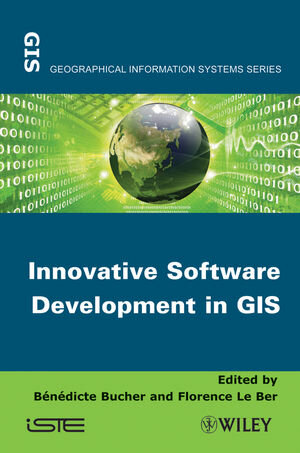At a time when people use more and more geographic informationand tools, the management of geographical information in softwaresystems still holds many challenges and motivates researchers fromdifferent backgrounds to propose innovative solutions.
Representing geographical space beyond our mere perception is keyto making relevant decisions, whether it is with respect tosustainable development or to the planning of everyday activities. Designing, sharing and exploiting such representations entails manychallenges.
This book presents recent software design projects, led in teams, which sometimes have different backgrounds, to address thesechallenges. It analyzes the specificities of these projects interms of motivation, data models and analysis methods. Proposalsare also put forward to improve resource sharing in thisdomain.
Contents
1. Introduction, Bénédicte Bucher and Florence LeBer.
Part 1. Software Presentation
2. ORBISGIS: Geographical Information System Designed by and forResearch, Erwan Bocher and Gwendall Petit.
3. GEOXYGENE: an Interoperable Platform for GeographicalApplication Development, Éric Grosso, Julien Perret andMickaël Brasebin.
4. Spatiotemporal Knowledge Representation in AROM-ST, BogdanMoisuc, Alina Miron, Marlène Villanova-Olivier andJérôme Gensel.
5. GENGHIS: an Environment for the Generation of SpatiotemporalVisualization Interfaces, Paule-Annick Davoine, Bogdan Moisuc andJérôme Gensel.
6. GEOLIS: a Logical Information System to Organize and SearchGeo-Located Data, Olivier Bedel, Sébastien Ferré andOlivier Ridoux.
7. GENEXP-LANDSITES: a 2D Agricultural Landscape Generating Pieceof Software, Florence Le Ber and Jean-François Mari.
8. MDWEB: Cataloging and Locating Environmental Resources, Jean-Christophe Desconnets and Thérèse Libourel.
9. WEBGEN: Web Services to Share Cartographic Generalization Tools, Moritz Neun, Nicolas Regnauld and Robert Weibel.
Part 2. Summary and Suggestions
10. Analysis of the Specificities of Software Development inGeomatics Research, Florence Le Ber and BénédicteBucher.
11. Challenges and Proposals for Software Development Pooling inGeomatics, Bénédicte Bucher, Julien Gaffuri, Florence LeBer and Thérèse Libourel.
Representing geographical space beyond our mere perception is keyto making relevant decisions, whether it is with respect tosustainable development or to the planning of everyday activities. Designing, sharing and exploiting such representations entails manychallenges.
This book presents recent software design projects, led in teams, which sometimes have different backgrounds, to address thesechallenges. It analyzes the specificities of these projects interms of motivation, data models and analysis methods. Proposalsare also put forward to improve resource sharing in thisdomain.
Contents
1. Introduction, Bénédicte Bucher and Florence LeBer.
Part 1. Software Presentation
2. ORBISGIS: Geographical Information System Designed by and forResearch, Erwan Bocher and Gwendall Petit.
3. GEOXYGENE: an Interoperable Platform for GeographicalApplication Development, Éric Grosso, Julien Perret andMickaël Brasebin.
4. Spatiotemporal Knowledge Representation in AROM-ST, BogdanMoisuc, Alina Miron, Marlène Villanova-Olivier andJérôme Gensel.
5. GENGHIS: an Environment for the Generation of SpatiotemporalVisualization Interfaces, Paule-Annick Davoine, Bogdan Moisuc andJérôme Gensel.
6. GEOLIS: a Logical Information System to Organize and SearchGeo-Located Data, Olivier Bedel, Sébastien Ferré andOlivier Ridoux.
7. GENEXP-LANDSITES: a 2D Agricultural Landscape Generating Pieceof Software, Florence Le Ber and Jean-François Mari.
8. MDWEB: Cataloging and Locating Environmental Resources, Jean-Christophe Desconnets and Thérèse Libourel.
9. WEBGEN: Web Services to Share Cartographic Generalization Tools, Moritz Neun, Nicolas Regnauld and Robert Weibel.
Part 2. Summary and Suggestions
10. Analysis of the Specificities of Software Development inGeomatics Research, Florence Le Ber and BénédicteBucher.
11. Challenges and Proposals for Software Development Pooling inGeomatics, Bénédicte Bucher, Julien Gaffuri, Florence LeBer and Thérèse Libourel.







